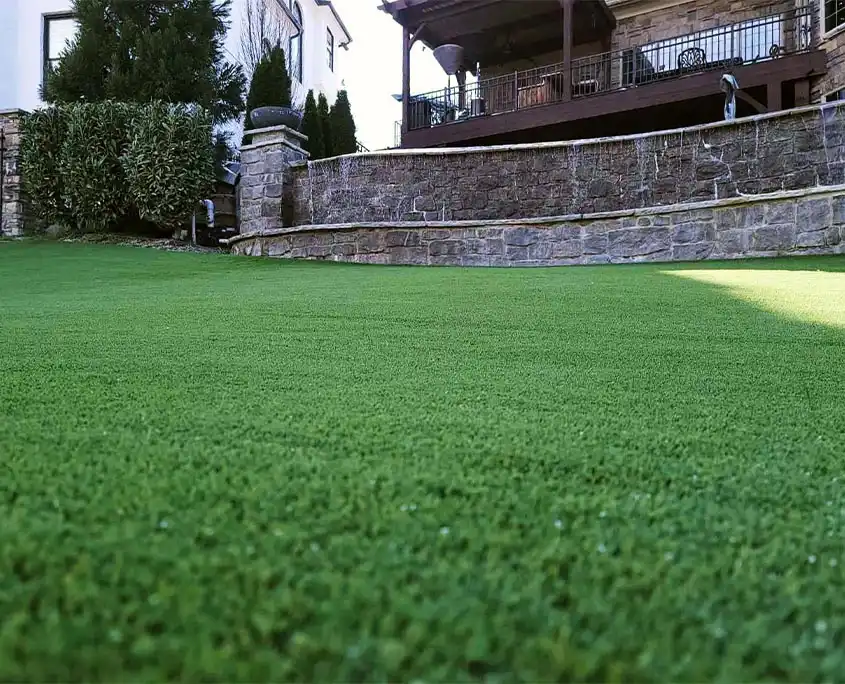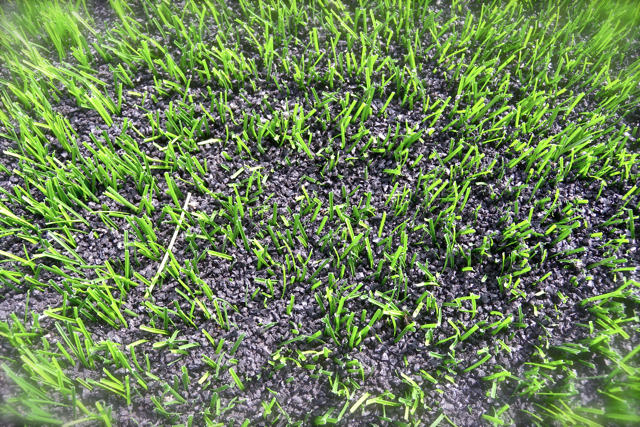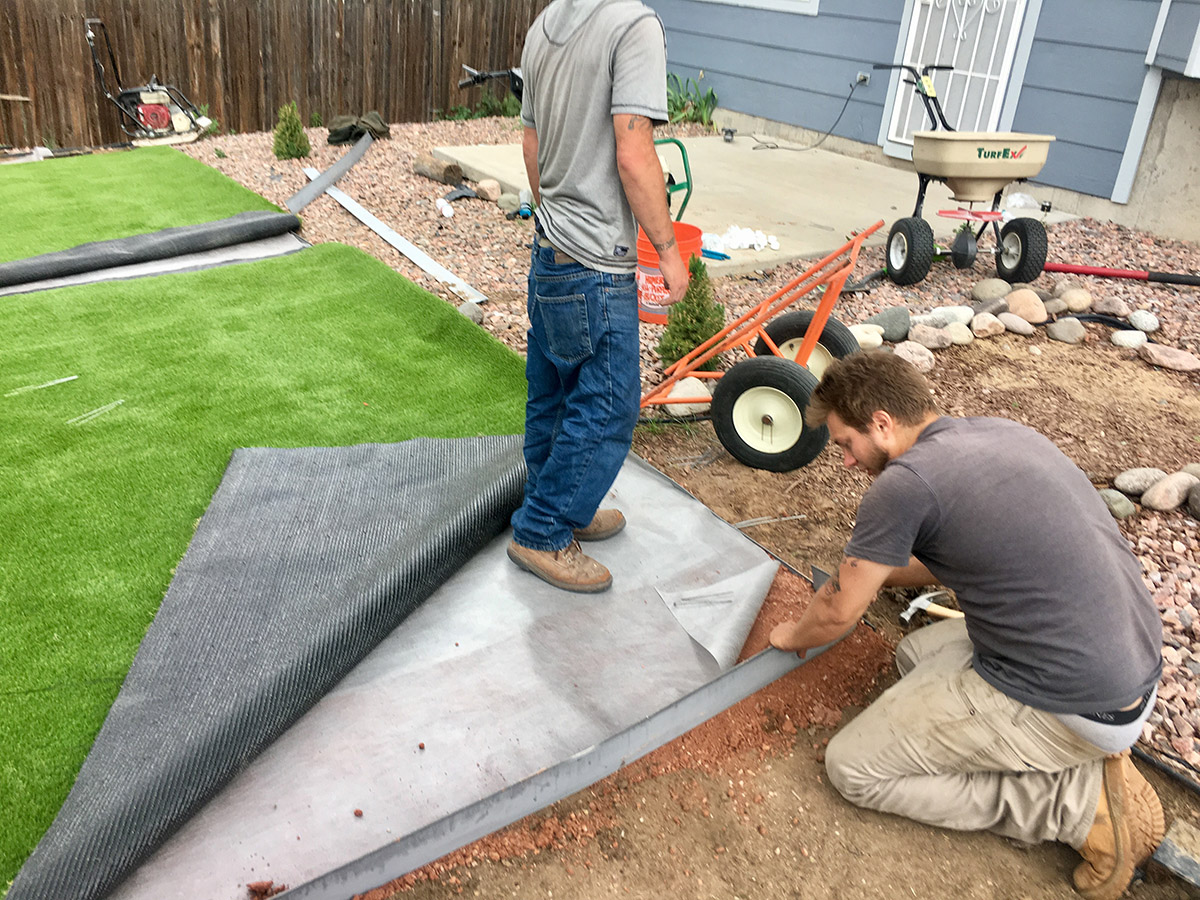See Why Homeowners Prefer Synthetic Grass for Sustainable Landscaping Practices
As property owners significantly focus on sustainability in landscape design, synthetic turf has become a compelling alternative to typical lawn. Its capability to save water, minimize maintenance initiatives, and lessen ecological influence placements it as a sensible choice for those looking for green solutions. Additionally, the visual appeal and convenience of synthetic lawn cater to diverse layout preferences. Nevertheless, the effects of this shift extend past simple benefit and looks, prompting a more detailed assessment of exactly how these choices affect broader ecological results. What stays to be explored is the complete scope of benefits that artificial grass can offer to property owners and the setting alike.
Water Preservation Conveniences
One of the most substantial benefits of man-made lawn is its duty in water preservation. In comparison, man-made grass eliminates this need totally, as it does not need irrigation.
Furthermore, the setup of synthetic turf can contribute to a much more sustainable landscape. Property owners can considerably lower their water costs, permitting for reallocation of resources to other environmental initiatives or house usages. Additionally, artificial lawn is created to hold up against different climatic problems without the requirement for additional watering, making it an optimal choice for areas dealing with water scarcity.
The ecological benefits expand beyond prompt water cost savings. By reducing water intake, man-made turf aids to reduce the impacts of environment change, preserving vital ecological communities that are endangered by too much water extraction. As lasting landscaping methods obtain traction, synthetic grass becomes an accountable selection for property owners looking for to produce environmentally friendly outside areas.
Reduced Maintenance Initiatives
Synthetic grass significantly lowers maintenance initiatives contrasted to traditional turf yards. With artificial grass, homeowners can get rid of the taxing jobs connected with natural landscaping, such as mowing, feeding, and weeding. This not just saves useful time yet also reduces physical labor, making yard care obtainable for individuals of every ages.
Conventional yards require constant cutting to preserve an aesthetically pleasing elevation, whereas fabricated grass remains consistently lavish without the need for reducing. Additionally, homeowners no much longer require to apply pesticides or plant foods, which are usually needed to keep all-natural turf healthy.
In addition, synthetic grass is resistant and long lasting, calling for very little maintenance beyond periodic brushing and washing to remove particles. This convenience of maintenance permits property owners to appreciate their outdoor areas without the constant concern of upkeep, supplying more time for recreation and family tasks. Inevitably, the decreased upkeep initiatives connected with synthetic grass make it an enticing option for those seeking a low-maintenance, aesthetically appealing landscape.

Environmental Effect Decrease
There is a growing acknowledgment of the ecological benefits related to synthetic lawn, particularly in regards to water preservation and reduced chemical use. Standard lawns need substantial amounts of water, particularly in drought-prone areas, resulting in boosted stress on neighborhood water resources. In comparison, fabricated turf gets rid of the demand for irrigation, substantially minimizing water consumption and promoting sustainability.
Furthermore, traditional grass upkeep frequently includes the application of herbicides, chemicals, and plant foods, which can add to soil and water contamination. Man-made lawn reduces this environmental risk by requiring very little maintenance and basically eliminating the need for hazardous chemicals. This not only improves soil health and wellness however likewise safeguards regional environments from poisonous runoff.
Additionally, the production of natural grass yards typically entails using fossil gas for mowing and landscape design tools, more adding to greenhouse gas discharges. By choosing artificial lawn, home owners can dramatically decrease their carbon impact connected with lawn treatment tasks.
Aesthetic Charm and Flexibility
In addition to its environmental benefits, synthetic grass provides substantial aesthetic appeal and adaptability for landscape design. Property owners can attain a lush, eco-friendly appearance year-round, eliminating the seasonal changes generally related to natural lawn. This regular visual not just enhances the visual charm of a home however additionally adds to a well-maintained and polished look.
Moreover, synthetic grass is offered in a range of styles, appearances, and shades, permitting modification to match private preferences and design themes - Turf installation phoenix az. Whether used in residential yards, business areas, or leisure areas, it can perfectly incorporate right into diverse landscaping layouts, from contemporary minimalist to lush exotic setups
The convenience of synthetic grass extends past simple appearance; it can be mounted in different locations, look these up consisting of roofs, patios, and also indoor rooms, producing opportunities for unique landscape design services. Additionally, it is suitable for a variety of activities, from children's play locations to pet-friendly environments, giving performance without compromising design.
Eventually, the aesthetic allure and adaptability of synthetic grass have a peek here make it an appealing alternative for house owners looking for sustainable landscape design solutions that do not give up charm for ecological responsibility.

Long-Term Cost Financial Savings
One of the most engaging benefits of artificial grass is its possibility for lasting cost savings. Unlike all-natural yard, which requires regular maintenance-- including mowing, watering, fertilizing, and bug control-- fabricated lawn substantially lowers these recurring expenses.
Additionally, synthetic grass has a life-span of 15 to 25 years, relying on its top quality and use. This resilience reduces substitute expenses, making it a more affordable selection in the future. The initial investment in artificial lawn can usually be redeemed via the cost savings accumulated over time.
While the ahead of time expense may seem greater compared to sod installation, the collective financial savings from minimized maintenance and water use frequently outweigh these first expenditures. Ultimately, the fostering of fabricated grass not only advertises a lasting landscaping option however also supplies home owners a monetarily savvy alternative that lines up with long-term budgeting objectives.
Conclusion
Artificial turf arises as a compelling alternative for sustainable landscape design, providing significant benefits in water conservation, reduced maintenance efforts, and diminished ecological effect. Its visual allure and flexibility boost the visual landscape while lining up with modern sustainability goals. Long-term cost financial savings add to its attractiveness for property owners. As communities progressively focus on eco-friendly methods, the fostering of synthetic grass stands for a dynamic action towards accomplishing resilient and sustainable landscapes.
In addition, fabricated lawn is made to withstand various climatic click now problems without the requirement for extra watering, making it an excellent selection for regions facing water deficiency. (Turf installation phoenix az)

Fabricated turf emerges as a compelling choice for lasting landscape design, providing significant advantages in water preservation, lowered upkeep efforts, and lessened environmental influence.
 Luke Perry Then & Now!
Luke Perry Then & Now! Rider Strong Then & Now!
Rider Strong Then & Now! Jenna Von Oy Then & Now!
Jenna Von Oy Then & Now! Nancy McKeon Then & Now!
Nancy McKeon Then & Now! Kane Then & Now!
Kane Then & Now!